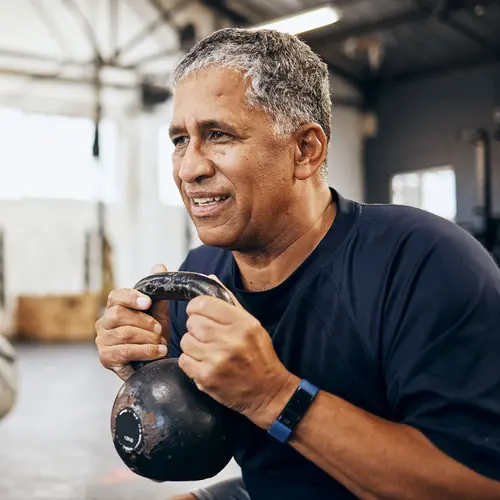How It Works
If knee strikes, kicks, and punches sound like a blast, give this total-body workout a try.
Burn about 350-450 calories an hour as you punch, jab, and kick your way toward better balance, flexibility, coordination, and endurance. You'll slash stress, too.
You'll typically take a group class, usually an hour long, at a kickboxing studio, gym, or rec center. You won't be fighting anyone (unless you're doing kickboxing moves in a martial arts class), but you'll kick and jab at the air and punching bags.
Intensity Level: High
This is a full-throttle, high-impact workout. Your legs and arms will be working hard. You’ll rev up your heart rate and keep it up throughout your workout.
Areas It Targets
Core: Yes. You will use your core muscles for many kickboxing moves.
Arms: Yes. Expect to do plenty of uppercuts and jabs.
Legs: Yes. Roundhouse kicks and side kicks work your hamstrings and quads.
Glutes: Yes. You’ll feel the burn when you do a roundhouse kick.
Back: Yes. This is a total-body workout that uses most of your muscles, including those in your back.
Type
Flexibility: Yes. Kickboxing will kick your flexibility up a notch.
Aerobic: Yes. This is a fierce cardio workout that keeps your heart pumping and torches calories.
Strength: Yes. Doing lots of kicks and punches makes you stronger.
Sport: No. You may do kickboxing in some martial arts, but the fitness classes aren't a sport.
Low-Impact: No. This workout is filled with bouncy, jarring moves.
What Else Should I Know?
Cost: If you take a kickboxing class, you’ll pay for gym or studio fees. You can download an app (or buy a DVD) and do it at home instead.
Good for beginners? Yes, but work at your own pace. Start with low kicks. Take it easy and gradually work up to a higher level.
Outdoors: No. This class is usually done inside.
At home: Yes. Download an app and follow the instructor.
Equipment required? You may use punching bags and jump ropes, which many gyms and studios have on hand. You can buy your own pair of boxing gloves, if you like.
What Physical Therapist Ross Brakeville Says:
Kickboxing can be good for your heart, joints, strength, balance, and coordination. It's a great way to tame stress, too. But always check with your doctor before starting a new fitness routine.
You can expect a physically demanding workout, especially if you go all-out for an hour-long class. Not ready for that? You and your instructor can modify kickboxing to meet your needs.
Work at your own pace. Start slowly and drink water before, during, and after your workout. Listen to your body and don’t overdo it.
Is It Good for Me If I Have a Health Condition?
If your doctor says it's OK for you, kickboxing is a great way to help manage many heart- and diabetes-related disorders. If you need to modify the moves, that's often possible. Let your instructor know.
Knee or back injuries can knock you out from kickboxing. Doing squats, twisting, and balancing on one leg can stress your back or aggravate a knee problem. Kickboxing makes you stronger, which can help prevent injuries in the first place.
If you're pregnant and you've been kickboxing, ask your doctor if it's OK for you to keep doing it. Make sure you drink plenty of water and don't get exhausted by the workout.

